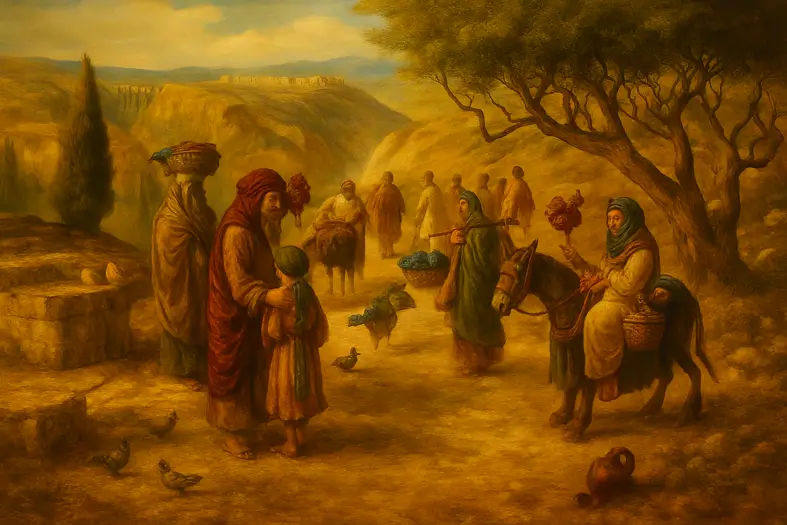


It is forbidden to erect a matzeivah (single stone pillar) as a site of worship, even if dedicated to Hashem.
This mitzvah prohibits the practice of building a matzeivah, a stone column once used by the Canaanites and earlier generations as a worship site. Rambam (Hilchot Avodat Kochavim 6:6) explains that although Avraham, Yaakov, and others once used pillars as altars, Hashem later forbade them because idolaters corrupted the practice. The Torah calls such pillars “hated by Hashem” (Deut. 16:22).
Sefer HaChinuch (Mitzvah 209) notes that Hashem seeks to distance Israel from all resemblance to idolatry. Rashi explains that what was once beloved (Yaakov’s stone pillar in Bet El, Gen. 28:18) became hated after idolaters appropriated the form for false worship. Ramban highlights that the prohibition emphasizes Israel’s unique Temple structure — the Mizbeach — which reflects sanctified service, unlike pagan forms. Midrash Sifrei (Shoftim §145) stresses that Torah commands us not only to reject idols themselves but also the cultural expressions of idolatry.
Commentary & Classical Explanation:
Contrast with Mitzvah 49 (Not to pass children through the fire to Molech):
Parallel to Mitzvah 302 (Not to build the altar with hewn stones):
Guarding Worship from Pagan Symbols
Designing Synagogues with Integrity
Avoiding False Aesthetics of Sanctity
Community Identity in a Pluralistic World


Mitzvot that prohibit worship of false gods and practices associated with idol worship.
Concerns the Beit HaMikdash, korbanot (offerings), and priestly service.
Represents the concept of spiritual intentionality, purity, and sanctity—set apart for a higher purpose.
Represents Emunah—the deep, inner trust in Hashem’s presence, oneness, and constant involvement in our lives. This badge symbolizes a heartfelt connection to G-d, rooted in belief even when we cannot see. It is the emotional and spiritual core of many mitzvot.
Signifies awe and reverence toward Hashem—living with awareness of His greatness and presence.
Used for mitzvot that reflect Judaism’s foundational principles—belief in G-d, reward and punishment, prophecy, Torah from Heaven, and more. These commandments shape the lens through which all others are understood.
Mitzvot that define and deepen the relationship between a person and their Creator. These include commandments involving belief, prayer, Shabbat, festivals, sacrifices, and personal holiness — expressions of devotion rooted in divine connection.

Dive into mitzvot, prayer, and Torah study—each section curated to help you learn, reflect, and live with intention. New insights are added regularly, creating an evolving space for spiritual growth.

Explore the 613 mitzvot and uncover the meaning behind each one. Discover practical ways to integrate them into your daily life with insights, sources, and guided reflection.

Learn the structure, depth, and spiritual intent behind Jewish prayer. Dive into morning blessings, Shema, Amidah, and more—with tools to enrich your daily connection.

Each week’s parsha offers timeless wisdom and modern relevance. Explore summaries, key themes, and mitzvah connections to deepen your understanding of the Torah cycle.